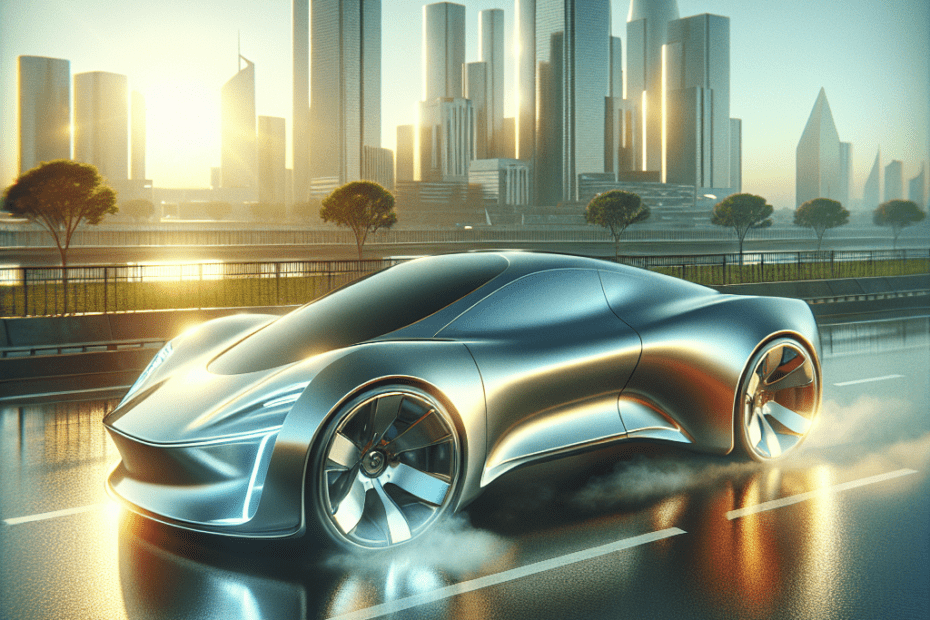“`html
Shape-Memory Cars: Vehicles That Remember
The world of automotive innovation consistently seeks groundbreaking technologies that improve chassis safety, design agility, and passenger comfort. A standout development in this realm is the advent of shape-memory alloy vehicles. These unique materials have the potential to revolutionize how vehicles are manufactured, repaired, and even how they perform on the road.
Introduction to Shape-Memory Alloy Vehicles
Shape-memory alloys (SMAs) are special metals designed to remember their original shape. When they are deformed, they can return to their predetermined form once heat or other stimuli are applied. Such materials provide fascinating possibilities in various industries but hold particular promise in the automotive sector. By incorporating SMAs into vehicle design, manufacturers can produce cars that are not only lighter but also more durable and adaptable to various conditions.
How Shape-Memory Alloys Work
SMAs usually consist of combinations like nickel and titanium. The secret behind their ability to ‘remember’ lies in their crystal structure, which can toggle between two different phases known as martensite (deformable) and austenite (rigid). When cooled, the SMA adopts the more flexible martensite phase, enabling physical alterations. Upon reheating, it reverts to the austenite phase, regaining its original structure.
Applications in Automotive Design
Incorporating SMAs into vehicles introduces several innovative applications:
- Bodywork Repair: With SMAs, dents can potentially fix themselves with exposure to the proper heat, dramatically reducing repair time and costs.
- Adaptive Aerodynamics: Components like spoilers could reshape dynamically based on speed and other factors for optimal performance.
- Safety Enhancements: Crash structures could absorb impact more efficiently by transforming their shape at the moment of collision.
Current Research and Statistics
Research on SMAs is expanding rapidly, signaling promising advancements. According to a report by MarketsandMarkets, the shape-memory alloys market is expected to grow from USD 10.7 billion in 2021 to USD 16.7 billion by 2026, a compound annual growth rate of 9.4%. The demand is primarily driven by aerospace and automotive sectors looking to enhance functionality through material innovation.
Additionally, Grand View Research indicates the automotive component application segment of SMAs is projected to experience the fastest growth, with a notable increase in demand expected in the coming years as manufacturers continue to push toward advanced, intelligent vehicle designs.
Challenges and Considerations
While shape-memory alloy vehicles offer many promising features, challenges remain. Temperature changes necessary for SMA activation can be difficult to control and predict in everyday vehicular use. Moreover, the cost of SMAs is currently higher than traditional materials, presenting economic hurdles to widespread adoption.
Manufacturers must also consider the longevity and fatigue aspects of SMAs, ensuring these materials maintain their integrity over a vehicle’s lifespan to prevent unexpected malfunctions or failures.
Future Outlook
Despite current limitations, the future of SMAs in automotive technology appears bright. Continued research and development are likely to reduce costs and enhance the reliability of these materials. Partnerships between material scientists and engineers could lead to optimized design strategies that fully harness the potential of SMAs.
Additionally, their ability to reduce vehicle weight could improve fuel efficiency and reduce emissions, aligning with global efforts toward sustainability and environmental stewardship.
Key Takeaways
- Shape-memory alloys have the power to revolutionize automotive design through their unique memory properties.
- The automotive sector is a key area for SMA application due to its needs for durability, adaptability, and safety.
- The expected market growth for SMAs demonstrates their increasing importance in technology and innovation.
- Technical and economic challenges remain, but ongoing research aims to address these barriers.
- Future development in SMA-based vehicles could greatly contribute to lighter, more efficient, and safer cars.
Table: Pros and Cons of Shape-Memory Alloy Vehicles
| Pros | Cons |
|---|---|
| Dent-resistant bodywork | High cost of materials |
| Enhanced safety features | Temperature sensitivity |
| Increased fuel efficiency | Complexity in repair and maintenance |
| Improved aerodynamic components | Potential material fatigue |
FAQ Section
- What are shape-memory alloys?
Shape-memory alloys are metals that can return to their original shape after being deformed when exposed to an appropriate stimulus like heat. - How do SMAs benefit vehicle design?
They offer advantages like auto-repairing bodywork, adaptive components for better aerodynamics, and safer crash structures. - Why aren’t all vehicles made with SMAs?
The high cost and technical challenges such as material fatigue and temperature sensitivity currently limit widespread usage. - Will SMAs make cars more fuel efficient?
Yes, SMAs can help make vehicles lighter, reducing fuel consumption and emissions. - What is the market potential for SMAs in automotive design?
The market for shape-memory alloys in the automotive industry is expected to grow significantly, driven by the demand for innovative and smarter vehicle technologies.
“`
